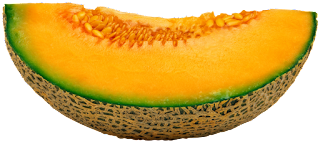 Millions of people have discovered that juicing
fruits and vegetables is perhaps one of the fastest and most efficient
ways to nourish their body. If you currently juice or are interested in
starting, here are some helpful juicing techniques and tips that can
make things easier, and help you get the most benefits of adding juices
to your diet.
Millions of people have discovered that juicing
fruits and vegetables is perhaps one of the fastest and most efficient
ways to nourish their body. If you currently juice or are interested in
starting, here are some helpful juicing techniques and tips that can
make things easier, and help you get the most benefits of adding juices
to your diet.Include foods that are negative in calorie count to your juice regimen as often as you can to get maximum nutrition with minimum additional fat burning exercises. The most popular negative-calorie foods are broccoli, cabbage, kale and herbs. High fiber fruits are also the best choice, as they take a lot of digestion to break down.
Juicers that feature a masticating option are your best bet. Masticating juicers come with extra features you won't find on most other juices, such as features to grind, mill, and puree your juice. Explore these different features to spice up your juicing routine.
Since they're bitter, you might want to mix them with sweet fruits or vegetables. Any sweet fruit will do, or even a sweet vegetable like a carrot. You can try watermelon, cantaloupe, strawberries, and many other different options to sweeten your juice. Create your own mix for your own tastes.
If you'd like to enhance your hair and skin, look no further than
cucumber juice! There are large amounts of the mineral silica found in
cucumbers. Silica is not only good for skin and hair, it is also good
for bones, tendons, ligaments and muscles.
Once you have completed making your juice, wash the machine right away. You are likely to notice the ability of some types of juice to cause staining on parts of your juicing equipment.
When you wish to add new vegetables for juicing, just add one at a time. New foods can sometimes upset your stomach. Introducing foods gradually gives your body time to adjust and makes it easier to identify foods that cause digestive distress.
Once you have completed making your juice, wash the machine right away. You are likely to notice the ability of some types of juice to cause staining on parts of your juicing equipment.
When you wish to add new vegetables for juicing, just add one at a time. New foods can sometimes upset your stomach. Introducing foods gradually gives your body time to adjust and makes it easier to identify foods that cause digestive distress.
You can add in fruits or vegetables you do not like and then cover their
flavor up with a stronger and yummier fruit or vegetable. By doing
this, you can ensure that you are not missing out on any vitamins and
minerals that are good for you. Two great ingredients to use to mask
flavors you don't like are lemon juice and apples.
If you have diabetes or hypoglycemia, only juice vegetables until you
talk to your doctor. The sugar levels in your blood can rapidly increase
by sugars from fruit. People who have medical conditions that require
certain dietary restrictions should carefully keep track of the amounts
of fruit used in their juice blends. Vegetables seldom present a blood
glucose concern, but keep in mind some vegetables can affect blood
coagulation, an important consideration if you are using prescription
blood thinners.
When you get started with juicing, keep in mind that not all fruits are the same. Some citrus fruits, such as tangerines and oranges, may require special equipment to properly extract their juice. Then, there are melons like cantaloupe and honeydew, neither of which taste very good blended with other fruits.
Have you reached a point in your smoothie preparation where you have run out of new ideas. Go to the nearest bookstore and find cookbooks of recipes, or look online. If you drink the same juice every day, you're going to get bored. Vary your recipes to keep yourself interested.
As stated in the article above, consuming vegetable and fresh fruit juice is is a highly nutritious benefit to your health. If you follow a regular, detailed juicing regimen, you can see dramatic improvement in your fitness and overall health.
When you get started with juicing, keep in mind that not all fruits are the same. Some citrus fruits, such as tangerines and oranges, may require special equipment to properly extract their juice. Then, there are melons like cantaloupe and honeydew, neither of which taste very good blended with other fruits.
Have you reached a point in your smoothie preparation where you have run out of new ideas. Go to the nearest bookstore and find cookbooks of recipes, or look online. If you drink the same juice every day, you're going to get bored. Vary your recipes to keep yourself interested.
As stated in the article above, consuming vegetable and fresh fruit juice is is a highly nutritious benefit to your health. If you follow a regular, detailed juicing regimen, you can see dramatic improvement in your fitness and overall health.
 |
| Cucumber Blueberry Smoothie Recipe |
About the Author:
If you are looking for the best juice machine available be sure to stop by this web site first to get helpful information and product reviews.



No comments:
Post a Comment
Thank you for leaving a comment. We appreciate your feedback.